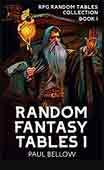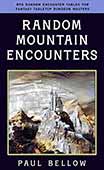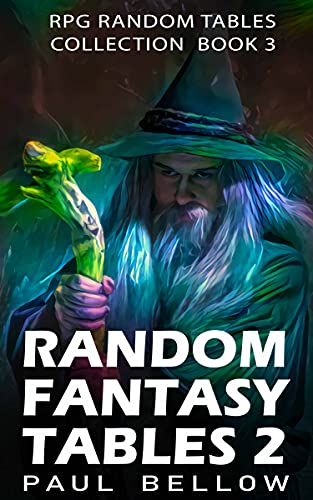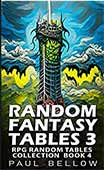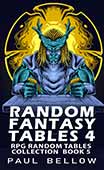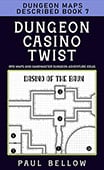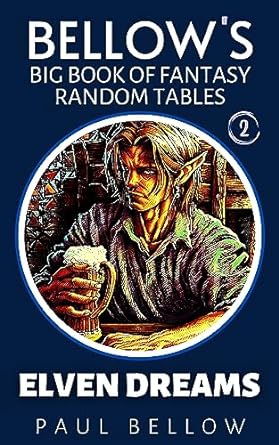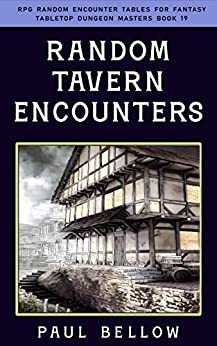In a landscape where the roar of the dragon tingles the air, and the shuffle of dice calls forth worlds upon the tabletop, a new chapter unfolds for Pathfinder. This is not just another edition—a recalibration of mechanics and lore—but rather a seismic shift in the RPG cosmos. Following the tumultuous waves of the D&D Open Game License (OGL) controversy, Paizo emerged as a beacon of innovation and defiance, setting its course toward independence with the creation of the Open RPG Creative (ORC) license.
Imagine a captain steering their vessel from the shadow of a leviathan, choosing uncharted waters where creativity knows no bounds. This was Paizo’s vision as it ventured on this new path, crafting the ORC license as a bastion of creative freedom. The winds of change carried with them a desire for liberation from corporate shackles, ensuring that the stories spun at gaming tables would be free from external control. The Pathfinder 2E Remaster is more than a mere update; it is a declaration of autonomy, a reset that distinguishes its identity from the behemoth that is Dungeons & Dragons (D&D).
But why, you might ask? Why endure the growing pains of such a radical departure? Here’s the thing: the seeds of this rebellion were sown in fertile soil, rich with the nutrients of community feedback. Players and creators alike yearned for a creative playground unburdened by restrictive licenses. The ORC license does more than just open doors; it demolishes walls, fostering an open world where innovation can take precedence.
In seeking independence, Paizo aimed not only to protect Pathfinder’s realms of imagination but also to empower the very people who breathe life into them—gamemasters and players who weave narratives with every die roll. It is a bold foray into the future, a commitment to creativity unfettered by the past, and a call to other RPG creators to join a collective evolution. Thus, through the tumult, Pathfinder’s remaster emerges not as a mere revision but as a renaissance, promising endless possibilities for those willing to voyage alongside it.
This is the tale of Pathfinder’s journey—a saga of independence, creativity, and the undying spirit of roleplay. It is a saga not just recorded in rulebooks, but in the hearts and minds of every gamer who ever dared to dream.
Understanding the D&D OGL Debacle
The Dungeons & Dragons Open Game License (OGL), once a heralded instrument of creative liberation, became a flashpoint of controversy that sent shockwaves throughout the RPG community. Initially introduced with fanfare, the OGL 1.0a presented an unprecedented opportunity—third-party creators could build within the D&D framework with legal protection. It was a gold rush for storytellers, who flocked to the realm, eager to craft their own adventures and share them with the world.
Try my AI Tabletop RPG generators...and an extensive library of content!
However, as the sun set on this golden age, rumblings of discontent grew. The flashpoint? Proposed changes encapsulated in a new version, OGL 1.1, threatened to unsettle this harmonious landscape. Almost overnight, the joys of creation turned into fears of constriction. As whispers of restricted freedoms grew louder, the RPG cosmos found itself in crisis. Players and creators alike raised the alarm, voicing concerns over the proposed licensing terms that seemed to curtail the very freedom OGL 1.0a had championed.
The community’s response was swift and fierce. United by a shared love for storytelling, players, publishers, and creators joined forces to demand a path that honored their voices. Key issues with the OGL 1.0a involved vague terms and limited enforcement, but the proposed OGL 1.1 changes only amplified these problems, suggesting royalties and greater control for the license holder—sparking outrage across the board.
| Key Issue | OGL 1.0a | OGL 1.1 Proposed Changes |
|---|---|---|
| Scope of Sharing | Allowed broad use by third-parties | Introduced restrictions on content and royalties |
| Perpetual Terms | Indefinite use once published | Suggested potential for revocations or alterations |
| Community Involvement | Encouraged collaborative expansion | Imposed more control from license holder |
| Open Mechanic Use | Promoted innovation without legal fear | Threatened with tighter restrictions |
| Licensing Fees | No royalties required | Proposed royalty fees for high earnings |
| Content Ownership | Creators held ownership of derivatives | Raised concerns about publisher control over content |
This upheaval led Paizo, among others, to seek alternatives, catalyzing robust discussions on ownership, creativity, and the future of roleplaying games. Third-party publishers found themselves at an unprecedented crossroads, needing to secure their creative rights and protect their communities. Faced with stark choices, these companies began searching for new paths, ones that would uphold the principles of independence and creativity that the OGL had originally represented.
Against this backdrop of disillusionment and hope, the ORC license emerged as a rallying cry—a testament to resilience and a vivid commitment to sustaining the cherished collaboration between game creators and their enthusiastic audiences. It was time for a new dawn, and Paizo led the charge, forging ahead into the unknown.
⚔️ Fantasy RPG Random Tables Books
Make life as a Gamemaster easier…
If you play Dungeons & Dragons, Pathfinder, or other fantasy RPGs, this
RPG random tables series
is packed with encounters, NPCs, treasure, and more. Available in eBook or print—either way, you’ll have a wealth of adventure ideas at your fingertips.
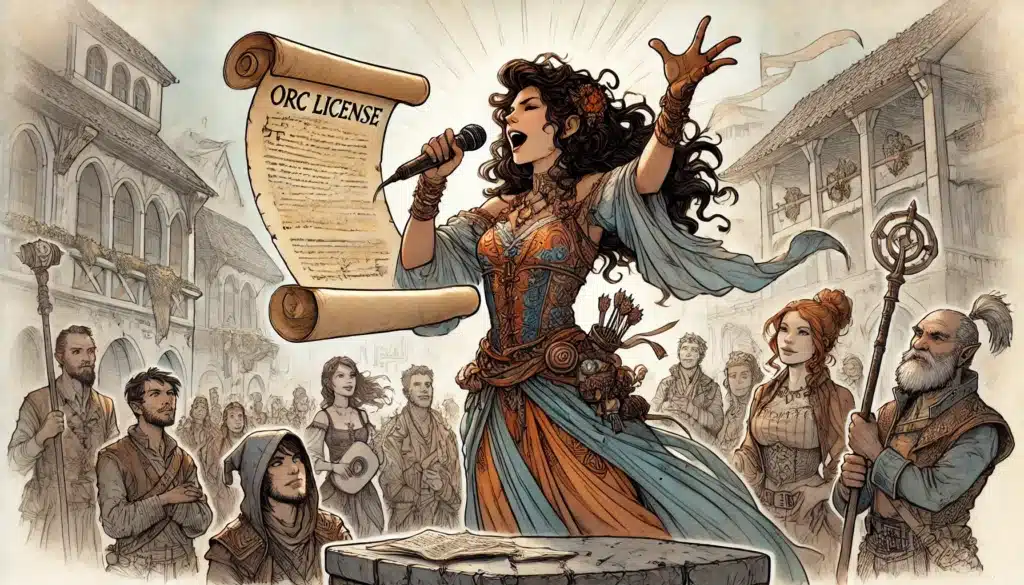
The Birth of the ORC License
The ORC license was born of a desire for unshackled creativity, a system free from the whims of corporate giants. What set the ORC license apart was its determined pledge to be system-agnostic, designed not just for Pathfinder but for an entire ecosystem of role-playing games. Its dome of protection extended far beyond the boundaries of individual mechanics or settings, ensuring that all who sought shelter beneath its canopy could breathe easier.
Collaboration was its cornerstone, with numerous publishers coming together to sculpt this new framework. The ORC license was not a mandate from on high but a grassroots effort—a banner under which creators could unite. It established principles that would make it perpetual, irrevocable, ensuring that once granted, no force could rescind the privileges it conferred. It was the bulwark the community needed to fend off future imperatives that sought to squeeze creativity into a cage.
The essence of ORC was its openness. Its creators sought to build a legal safe harbor wherein game mechanics could be shared without fear of retribution—a sandbox for creativity as wide as the imagination itself. In crafting the ORC license, Paizo and its partners provided a model of transparency, articulating licensing terms in a way that demystified the legalese often associated with such documents. The ORC license was a promise, a safeguard against future alterations that might once again threaten creative independence.
For the RPG community, the ORC license heralded a new era of collaboration and innovation. It allowed homebrew creators and third-party publishers to weave their craft with confidence. This sense of security fostered an environment where exploration was encouraged, and new ideas could flourish unfettered. The ORC license embodied the promise of independence from corporate control, nurturing a vibrant community that could now chart its course through unrestrained waters.
Core Features of the ORC License:
- System-agnostic design
- Perpetual and irrevocable terms
- Collaborative creation by multiple publishers
- Legal safe harbor for sharing game mechanics
- Protection against future license alterations
- Support for homebrew and third-party content
- Transparency in licensing terms
- Independence from corporate control
- Encouragement of innovation within the RPG community
- Commitment to open and accessible gaming
With each feature, the ORC license stood as a testament to what could be achieved when creative minds unify toward a common goal. The lingering echoes of past controversies now poised to be replaced by a symphony of collaboration and freedom, marking a turning point for the RPG industry.
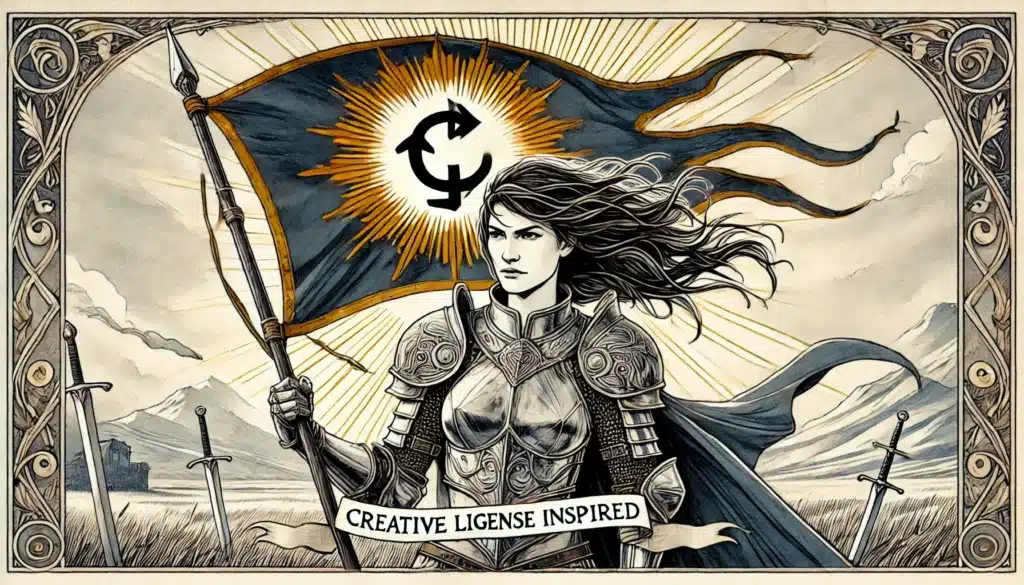
Pathfinder 2E Remaster: Key Changes
Amidst the swirling seas of change, Pathfinder 2E Remaster arrives—a lighthouse guiding adventurers into new realms of possibility. Paizo took this opportunity to refine and redefine the essence of their beloved game, stepping boldly away from the shadows of Dungeons & Dragons and into its own radiant spotlight. The changes introduced in this remaster reflect an ambitious vision and a keen understanding of the desires and frustrations of the community.
One of the most radical shifts is the removal of the alignment system. Say farewell to the rigid binaries of good versus evil, as Pathfinder 2E replaces them with edicts and anathemas to reflect a character’s behavioral tendencies rather than moral absolutes. This change opens pathways for players to explore characters that are not confined by the orthodox categories of law and chaos. With this, character development takes a more nuanced trajectory, allowing depth and complexity worthy of any epic tale.
The reworking of ancestries is another noteworthy transformation. Nephilim take the stage, replacing Aasimar and Tieflings, ushering in an era where hero diversity is celebrated. With a greater range of ancestries and the introduction of mixed ancestries beyond the classic half-elf and half-orc trope, players can craft avatars that truly reflect unique, multi-faceted origins. The remaster’s architecture stands tall, built on flexibility and inclusivity.
Magic also sees a renaissance, as the great schools are restructured, spells are renamed (goodbye Magic Missile, hello Force Barrage), and new dragon types aligned with magical traditions breathe fresh life into spellcasting. These elements converge to offer a world where magic is both familiar and newly adventurous.
The Pathfinder 2E Remaster embodies transformation as a natural and exciting endeavor. It invites players to rediscover a game they love, now reimagined with clarity and creativity, poised to enchant a new generation of adventurers. As dusk falls, the glowing embers of this remaster light the way, promising untold adventures in the campaigns to come.
Removal of Alignment System
The alignment system, a stalwart of fantasy RPGs, has long been a staple in character creation and development. It was a matrix upon which countless characters’ moral compasses were pinned. Yet, as storytelling evolved, the system’s constraints became evident—players found themselves boxed into simplistic moral extremes. Pathfinder 2E Remaster boldly waves goodbye to this archaic framework, opting instead for a more fluid concept: edicts and anathemas.
⚔️ Fantasy RPG Random Tables Books
Make life as a Gamemaster easier…
If you play Dungeons & Dragons, Pathfinder, or other fantasy RPGs, this
RPG random tables series
is packed with encounters, NPCs, treasure, and more. Available in eBook or print—either way, you’ll have a wealth of adventure ideas at your fingertips.
This new system focuses squarely on character behavior, offering players the chance to explore motivations and actions rather than being locked into ‘good’ or ‘evil’ labels. The shift allows characters to emerge as fully-rounded beings whose stories can evolve with every choice made. The bogeymen of moral absolutism give way to nuanced narratives where motivations and deeds matter more than alignment charts etched in granite.
Imagine a paladin, once pigeonholed as lawful good, who now navigates the world guided by personal vows—or edicts—to show mercy, beside anathemas that may include betrayal or cruelty. A rogue may reject traditional notions of chaos or evil, with edicts urging them to protect the innocent, placing personal honor above mere rule-breaking.
In this brave new system, the effect on roleplaying is profound. It beckons players to leap into the shoes of characters with rich, scintillating personalities who evolve amidst trials and triumphs. By removing alignment, Pathfinder opens the door wide for exploratory, character-driven storytelling.
Examples of Character Edicts and Anathemas:
- Paladin: Edicts – Show mercy; Anathemas – Betray allies
- Rogue: Edicts – Protect the innocent; Anathemas – Abandon friends
- Cleric: Edicts – Heal the wounded; Anathemas – Ignore suffering
- Barbarian: Edicts – Defend the tribe; Anathemas – Attack unprovoked
- Ranger: Edicts – Preserve nature; Anathemas – Pollute habitats
- Monk: Edicts – Seek enlightenment; Anathemas – Give in to fear
- Druid: Edicts – Maintain balance; Anathemas – Favor one element over others
- Sorcerer: Edicts – Seek arcane knowledge; Anathemas – Hoard magic selfishly
Reflecting on this shift, it’s clear that roleplay is empowered, liberated from the old guardrails of alignment. The narratives become more intricate, characters more relatable, allowing players to delve deeper into the human condition—even in fantastical settings. Free of alignment pigeonholes, Pathfinder players find themselves navigating a richer narrative landscape, one ripe for discovery and development.
Reworking of Ancestries
Pathfinder 2E Remaster brings forward an exciting revamp in its treatment of character ancestries, promoting a vibrant tapestry of origins and identities. The introduction of Nephilim, replacing Aasimar and Tieflings, breathes new life into character creation, inviting players to explore novel ancestries that embody celestial and infernal features without the baggage of a dichotomous identity.
But it’s not just about name changes; it’s about choice and flexibility. The remaster celebrates a bold shift toward mixed ancestries that transcend the traditional boundaries of half-elf and half-orc. Imagine crafting a character that embodies the cunning of a catfolk and the resilience of a dwarf. The possibilities become as limitless as the imagination.
Such changes reflect Paizo’s commitment to offering a diverse array of characters, each unique in their nature and abilities. The flexibility features allow players to tailor ancestries to fit a player’s vision of their character, fostering a more inclusive and personalized experience. This evolution in character design represents a step away from static ancestry roles toward a dynamic interplay of traits and backgrounds.
Try my AI Tabletop RPG generators...and an extensive library of content!
Here, ancestry becomes more than a set of stats—it becomes a narrative choice that influences character development and storytelling. The remaster invites players to think beyond stereotypes, to craft heroes and villains that are as complex as the stories they inhabit. The new system aligns perfectly with the needs of players seeking depth and inclusivity in their gaming experience.
| Original Name | New Name | Key Traits | Flexibility Features |
|---|---|---|---|
| Human | Human | Versatility, adaptability | Extra bonus feats, diverse backgrounds |
| Elf | Elf | Keen senses, nimbleness | Optional subraces for role specificity |
| Half-Orc | Full Orc | Strength, resilience | Ability to choose traits that emphasize ancestry |
| Tiefling | Nephilim | Infernal heritage, charisma | Trait customization options beyond standard lore |
| Aasimar | Nephilim | Celestial inclinations, wisdom | Integration of celestial aspects with customization |
| Dwarf | Dwarf | Durability, endurance | Delve into subraces that reflect cultural heritage |
| Half-Elf | Mixed Ancestry | Flexibility, charisma | Combine traits from two ancestries for a unique profile |
Embracing diversity in ancestry not only enhances character creation but also enriches storytelling, making the Pathfinder world larger and more inviting than ever before. Players are encouraged to forge new paths, creating identities that defy traditional molds, ensuring that each journey is as unforgettable as the one who undertakes it.
Adding to this narrative depth is the ability for players to experiment with all-new combinations. This liberates the traditional storytelling to infuse RPG sessions with unprecedented creativity. The changes brought forth by the remaster illuminate a path for storytelling that is both novel and nuanced, a beacon for adventurers as they navigate the myriad stories within the Pathfinder universe.
Other Notable Tweaks
The Pathfinder 2E Remaster doesn’t stop at alignments and ancestries; it invigorates gameplay with a slew of additional tweaks that push the envelope on innovation. The restructuring of magic schools is a cerebral delight for spellcasters, as it redefines what it means to wield arcane power. By introducing new dragon types aligned with distinct magic traditions, the remaster expands the horizons of magical lore, challenging players to rethink traditional spellcasting roles.
In this revamped magical schema, iconic spells undergo transformative revisions. Take, for example, the renaming of Magic Missile to Force Barrage—this isn’t just a cosmetic change. It embodies Pathfinder’s commitment to shedding its D&D skin and establishing an independent identity. Such changes invite players to engage with the game in fresh and unexpected ways.
Revisions also touch upon class proficiencies, the heart of character combat prowess. By updating and refining these skills, the remaster ensures that every class brings something unique and valuable to the battle grid. New weapon traits and the inclusion of revised feats add texture, creating layers of strategy within combat encounters.
The mechanics of death and dying also undergo scrutiny, with adjustments designed to heighten the stakes without undermining the heroic bravado expected of adventurers. Altered terminologies for conditions, like changing Flat-Footed to Off-Guard, breathe new life into familiar mechanics, ensuring they resonate with modern gaming sensibilities.
These changes aren’t merely about tweaking numbers; they represent a cultural shift within the Pathfinder realm—a conscious effort to craft a distinct, coherent gaming experience that honors its roots while embracing a forward-thinking ethos. Gamers new and old find themselves exploring a world constantly in flux, alive with possibilities and ripe for the taking.
Changes in the Remaster:
- Redefinition of spell schools
- Removal of spell components
- Renaming of spells (e.g., Magic Missile to Force Barrage)
- Changes to class proficiencies
- Introduction of new weapon traits
- Revisions to existing feats and abilities
- Adjustments to the death and dying mechanics
- Updates to terminology for conditions (e.g., Flat-Footed to Off-Guard)
- Reorganization of core rulebooks for clarity
With all these layers, Pathfinder positions itself with a fresh identity, distinct from D&D, while remaining approachable and inclusive. These innovations are more than a series of alterations; they collectively forge a new identity, presenting an enticing narrative for players ready to journey into newly imagined landscapes. Emboldened by these pioneering features, Pathfinder invites a new generation to delve into its remastered world—a realm crafted by and for the adventurers who inhabit it.
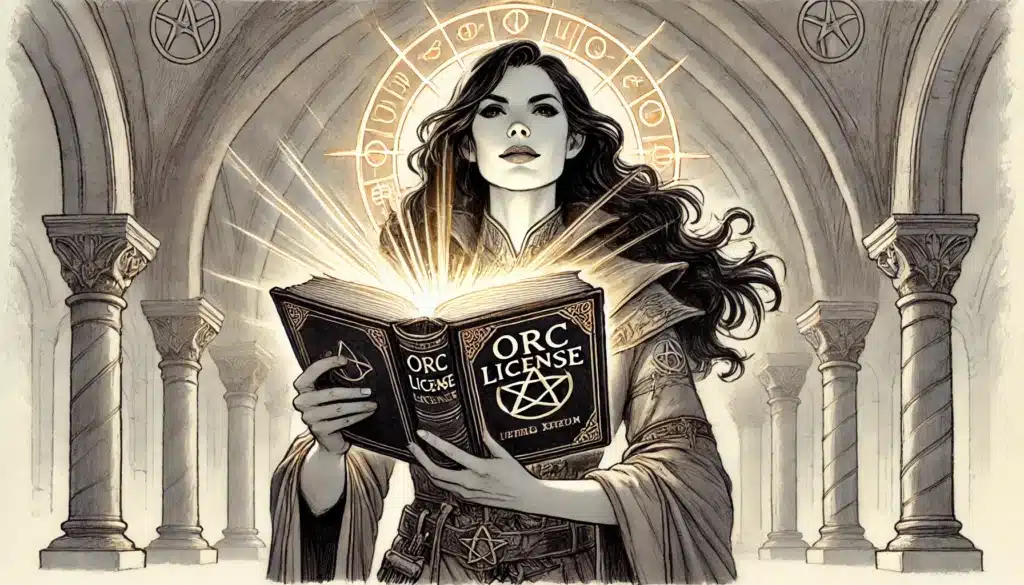
Impact on Third-Party RPGs
The introduction of the ORC license alongside the Pathfinder 2E Remaster has a ripple effect throughout the realm of third-party RPG publishers. For those who quietly champion creative storytelling from the shadows of larger systems, this new landscape offers both sanctuary and sanctuary challenge—a siren call toward innovative freedom, but also a daunting leap into the unexplored.
For these publishers, the ORC license acts as a bulwark of protection, shielding creative endeavors from the unpredictable tides of licensing turbulence. It empowers them to produce content without fear of capricious policy shifts by larger entities. Legal safe harbor becomes an essential foundation upon which third-party creators can build, crafting worlds that can embrace the full spectrum of narrative possibilities.
Yet opportunities for expansion come hand in hand with challenges. Adapting to a new licensing structure requires time, diligence, and sometimes an investment of resources beyond the reach of smaller publishers. It prompts a reevaluation of existing frameworks and necessitates a comprehensive understanding of the ORC’s provisions to ensure storytelling visions align with new legal paradigms.
In embracing the ORC framework, third-party RPGs diversify the ecosystem, allowing for a broader range of stories, mechanics, and worlds. A fertile ground for creators to innovate, collaborate, and share, it fosters a sense of community cohesion not often seen in an industry shadowed by oligarchic giants. The ORC license beckons them to stand side by side, forging alliances that craft a more inclusive and diverse RPG narrative ecosystem.
| Publisher | Flagship Product | Reaction to ORC License |
|---|---|---|
| Kobold Press | Midgard Campaign Settings | Enthusiastic, supportive of independent creation |
| Green Ronin | The Expanse RPG | Welcomes change, planning to adapt their models |
| Monte Cook Games | Numenera | Open to exploring new licensing opportunities |
| Goodman Games | Dungeon Crawl Classics | Enthusiastic about creative freedom and growth |
| Chaosium | Call of Cthulhu | Favorably receptive, seeking collaborative ventures |
This adaptation process presents a dual-edged potential—an opportunity to flourish and an obligation to remain vigilant against pitfalls. Nonetheless, the ORC license provides a bridge linking creators closer, galvanized by a shared commitment to broaden the RPG experience.
As this landscape shifts, new paths emerge, allowing creators to redefine and diversify their role within the RPG industry. Through the prism of collaboration and innovation, the tapestry of roleplaying realms promises to become richer, more varied, and ever more engaging.
Community Reception and Future Prospects
The Pathfinder community stands at a pivotal juncture, caught between nostalgia for familiar mechanics and anticipation for the open possibilities offered by the ORC license and the Pathfinder 2E Remaster. Overall, the reception has ranged from enthusiastic acclaim to cautious optimism, with the community buzzing about the fresh directions and innovations these changes herald.
⚔️ Fantasy RPG Random Tables Books
Make life as a Gamemaster easier…
If you play Dungeons & Dragons, Pathfinder, or other fantasy RPGs, this
RPG random tables series
is packed with encounters, NPCs, treasure, and more. Available in eBook or print—either way, you’ll have a wealth of adventure ideas at your fingertips.
In forums, the chatter is relentless, as players dissect every alteration and speculate on the impact these will have on their beloved campaigns. A common theme emerges: hope for long-term system stability and creative independence. The ORC license holds the promise of a future where third-party content flourishes unfettered, yet whispers of concern loom about the potential fragmentation of RPG systems.
The enhanced depth of roleplay, afforded by the removal of alignment constraints, is met with palpable excitement. Players are eager to dive into character-driven narratives that allow for complexity and growth without the confines of traditional morality. However, nostalgia proves a stubborn companion, as some worry about losing the classic fantasy flavor tied to older terminology.
With the ORC license, anticipation mounts for an influx of third-party content, sparking hope for more consistent language and mechanics in remastered books. Yet, as with all change, trepidation lingers—particularly among veteran players uneasy about leaving behind familiar rulebooks. New terminology and mechanics raise questions, and while some are eager to embrace these new concepts, others harbor skepticism about their widespread adoption.
Community Hopes and Concerns:
- Hope for long-term system stability and creative independence
- Concern over potential fragmentation of RPG systems
- Excitement for enhanced roleplaying depth without alignment constraints
- Worry about losing classic fantasy flavor tied to older terminology
- Anticipation for more third-party content supported by ORC
- Fear of confusion for new players transitioning from older rulebooks
- Hope for more consistent language and mechanics in remastered books
- Skepticism about how well the community will adopt the new terminology
- Excitement for unique Pathfinder identity free from D&D’s shadow
- Desire for deeper integration of storytelling tools in future expansions
This mosaic of perspectives underscores the dynamic conversation surrounding Pathfinder’s evolution. As community engagement deepens, the trajectory of these changes will depend on the ability of players and publishers to embrace these new paradigms.
The momentum behind ORC adoption and Pathfinder’s remaster suggests a blueprint for the next era of open RPG systems. The success of this shift will hinge on the transparency of publishers and their commitment to the community. The future offers unprecedented possibilities, guided by the principles of independence and creativity. In this new world, the journey is as significant as the destination—a testament to the transformative power of imagination and collaboration.

Final Thoughts on Pathfinder’s Future
Pathfinder’s journey toward independence is a narrative of boldness and vision—a commitment to full autonomy through the advent of the ORC license and the significant updates embedded within its remaster. Emerging from the shadow of D&D, Paizo has etched a path that not only separates itself from legacy systems but also heralds a new era of creativity and innovation in the RPG sector.
This transition is not without its stumbling blocks. For seasoned players, accustomed to the lexicon of decades-old terminology, the road ahead may seem daunting. Yet, the promise of narrative flexibility, enriched player agency, and modernized mechanics holds immense potential that overshadows short-term discomfort. It’s a reawakening of roleplay, where the stories told are no longer bounded by the constraints of previous iterations.
The remaster’s focus on player choice and story-driven character development resonates as a major victory for fans. This isn’t merely a survival story post-OGL—it’s a thriving, vibrant testament to Paizo’s unwavering commitment to creativity and community trust. The changes may be challenging, but the horizon gleams with opportunity and invention.
Pathfinder stands poised not seulement as a paragon of its own future but as a pioneer for open systems, lighting the way for others to follow. Here lies the evidence of a game not just enduring the tumult but leading the charge into the unknown, daring to redefine what it means to tell stories that captivate, educate, and resonate long into the dice-scarred night.


